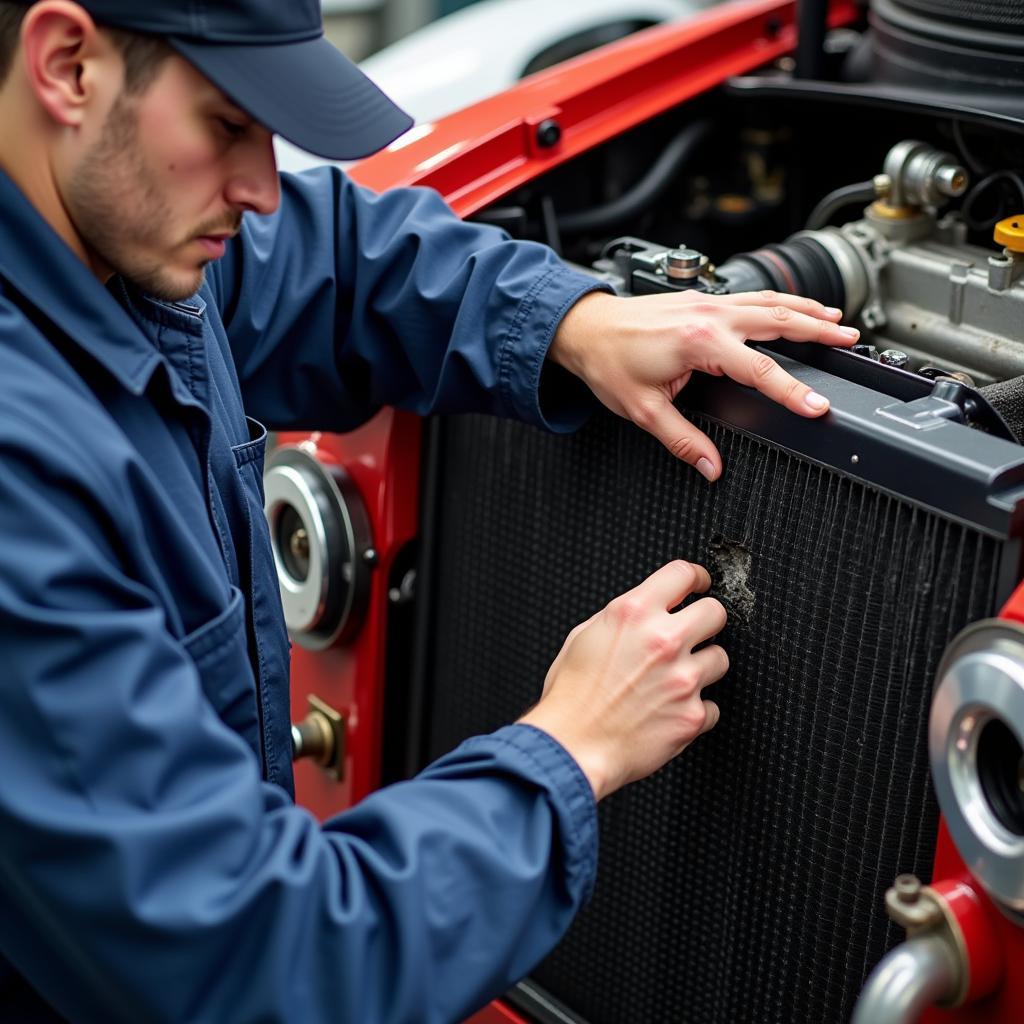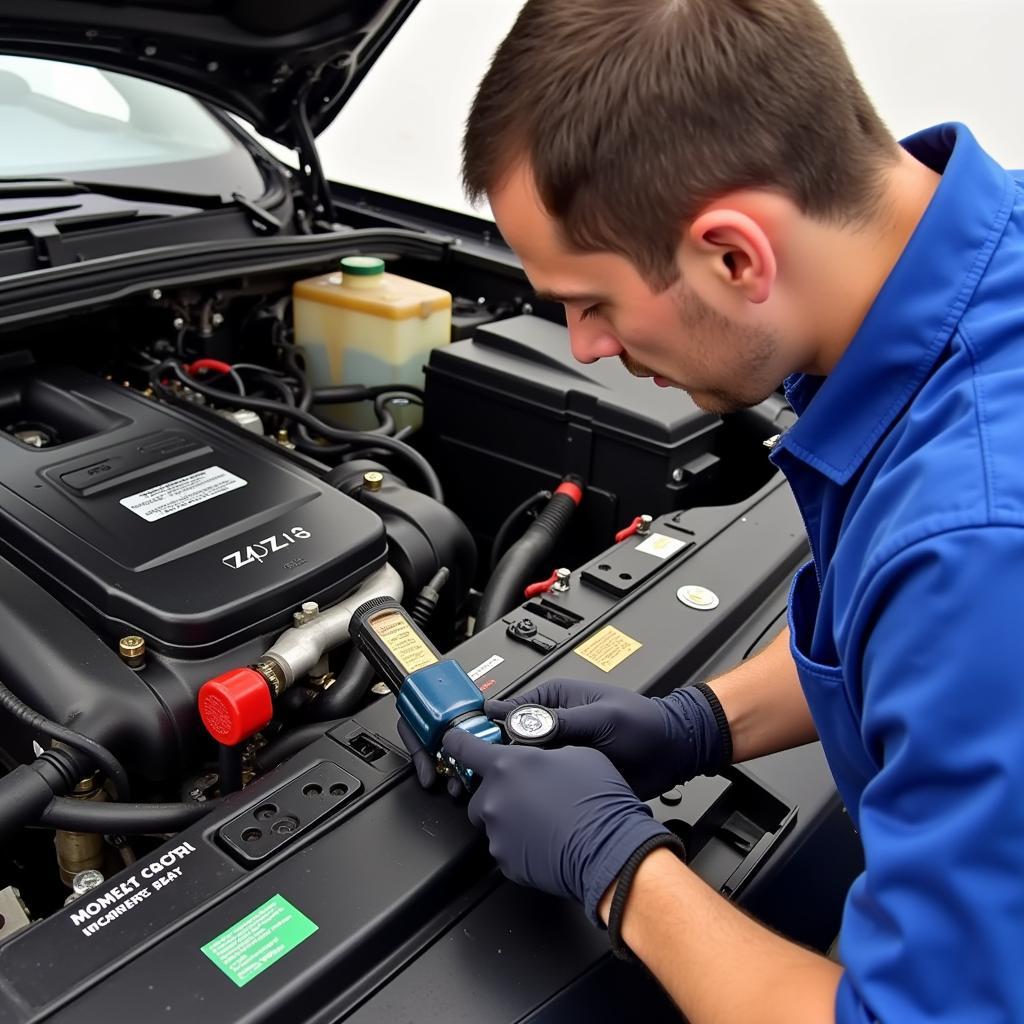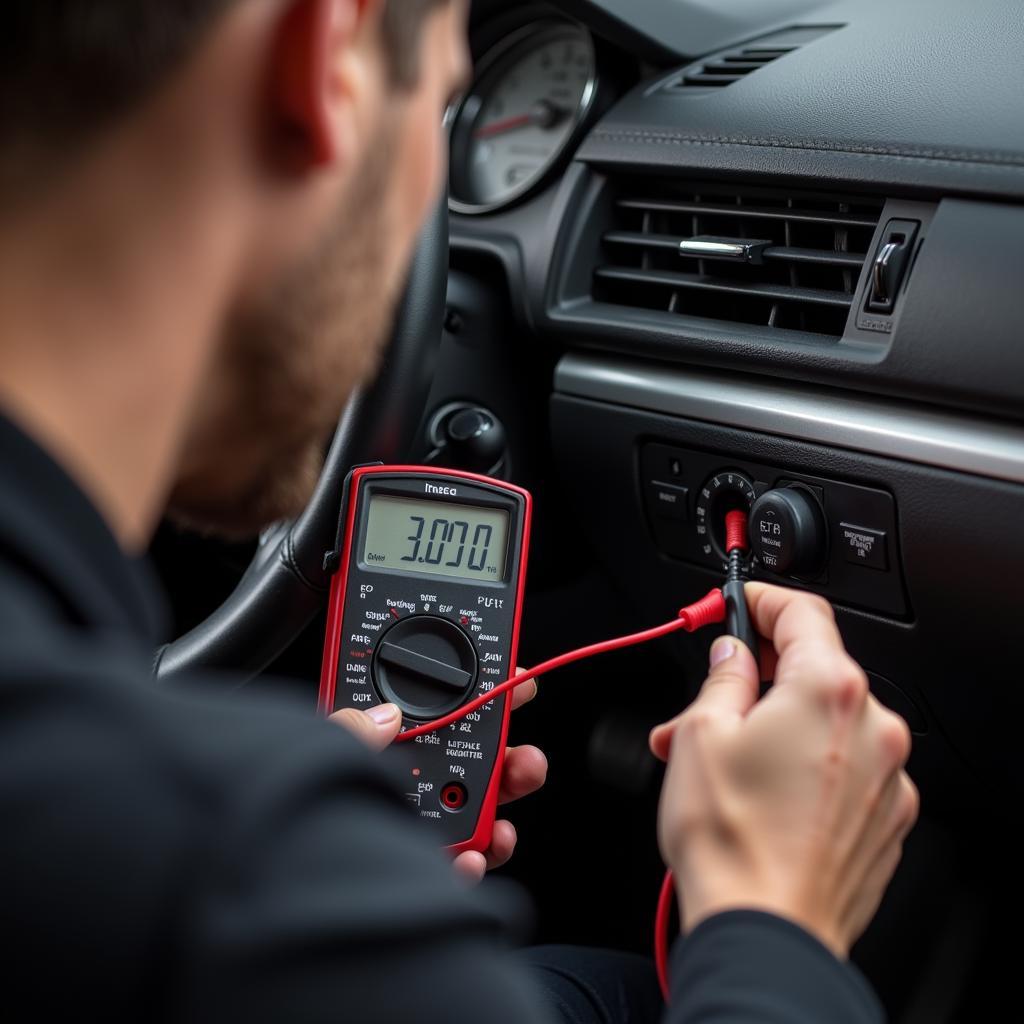Overheating is the nemesis of any race car, capable of turning a winning run into a DNF faster than you can say “blown head gasket.” Understanding the intricacies of race car cooling systems is crucial for both drivers and mechanics aiming for peak performance. This guide dives deep into the common cooling problems plaguing race cars and offers practical solutions to keep your engine running at optimal temperatures, lap after lap.
Common Race Car Cooling Problems
Several factors can contribute to Race Car Cooling Problems. From leaks and blockages to inadequate cooling capacity and even driving style, identifying the root cause is the first step towards a solution.
Radiator Issues
The radiator is the heart of your cooling system. Common radiator problems include leaks, clogged fins, and insufficient airflow. Leaks can be caused by debris impact, corrosion, or even excessive pressure. Clogged fins restrict airflow, reducing the radiator’s ability to dissipate heat. Similarly, inadequate airflow due to a poorly positioned radiator or blocked ducting can significantly impact cooling efficiency. Regular inspection and cleaning of the radiator are crucial for preventing these issues. Similar to car problems oil in radiator, a compromised radiator can lead to overheating.
 Race Car Radiator Inspection
Race Car Radiator Inspection
Coolant System Leaks
Coolant leaks can occur in various parts of the system, including hoses, water pump, thermostat housing, and even the engine block itself. Leaks not only reduce coolant levels, leading to overheating but can also cause pressure loss, impacting the efficiency of the entire system. Pressure testing the cooling system is a reliable method to pinpoint leaks.
Thermostat Malfunction
The thermostat regulates coolant flow, ensuring the engine reaches and maintains optimal operating temperature. A stuck-closed thermostat restricts coolant flow, causing overheating. Conversely, a stuck-open thermostat can prevent the engine from reaching optimal temperature, affecting performance.
Water Pump Failure
The water pump circulates coolant throughout the engine and radiator. A failing water pump can lead to reduced coolant flow and ultimately overheating. Signs of a failing water pump include unusual noises, leaks, and overheating.
Inadequate Cooling Capacity
For highly modified race cars generating significant horsepower, the stock cooling system might be insufficient. In such cases, upgrading to a larger radiator, more efficient water pump, or adding an oil cooler can be necessary.
 Race Car Cooling System Upgrade
Race Car Cooling System Upgrade
Preventing Race Car Cooling Problems
Preventing cooling problems is far more effective than dealing with them on the track. Regular maintenance, pre-race inspections, and using high-quality components are crucial.
Regular Maintenance
Regularly flush and refill your coolant system with the correct type of coolant. Inspect all hoses and connections for leaks or wear and tear.
Pre-Race Inspections
Before every race, thoroughly inspect the entire cooling system. Check coolant levels, look for leaks, and ensure all components are functioning correctly. Problems with a 1993 lincoln town car can offer valuable lessons in preventative maintenance, even for race cars.
High-Quality Components
Invest in high-quality cooling system components designed for racing applications. These components are typically more durable and efficient than stock parts. Are mazda 3 cars known for there engine problems? While not directly related to racing, understanding common issues in other vehicles can broaden your perspective on preventative maintenance.
Troubleshooting Race Car Cooling Problems
If you encounter cooling problems, a systematic approach to troubleshooting is essential.
Check Coolant Levels
The first step is to check the coolant level. Low coolant levels are a common cause of overheating.
Inspect for Leaks
Carefully inspect all hoses, connections, and components for leaks.
Test the Thermostat
Test the thermostat to ensure it’s functioning correctly.
Check the Water Pump
Inspect the water pump for leaks and unusual noises.
Evaluate Cooling Capacity
If all other components are functioning correctly, evaluate the overall cooling capacity of the system. An upgrade might be necessary. Understanding 1984 lincoln town car problems can provide insight into how older cooling systems can fail, informing your preventative maintenance strategies.
 Race Car Cooling System Pressure Test
Race Car Cooling System Pressure Test
Conclusion
Race car cooling problems can be frustrating and costly. By understanding the common causes and implementing preventative measures, you can keep your engine running cool and maximize your chances of success on the track. Regular maintenance, meticulous inspections, and using high-quality components are key to achieving optimal cooling performance. Don’t hesitate to contact AutoTipPro at +1 (641) 206-8880 or visit our office at 500 N St Mary’s St, San Antonio, TX 78205, United States for expert advice and assistance with your race car cooling needs. For a free look at your car problems, consult our expert advice.
FAQ
- What type of coolant should I use in my race car?
- How often should I flush my cooling system?
- What are the signs of a failing water pump?
- How can I improve the airflow to my radiator?
- What are the benefits of using an oil cooler?
- How can I tell if my thermostat is stuck?
- What should I do if my car overheats on the track?






Leave a Reply